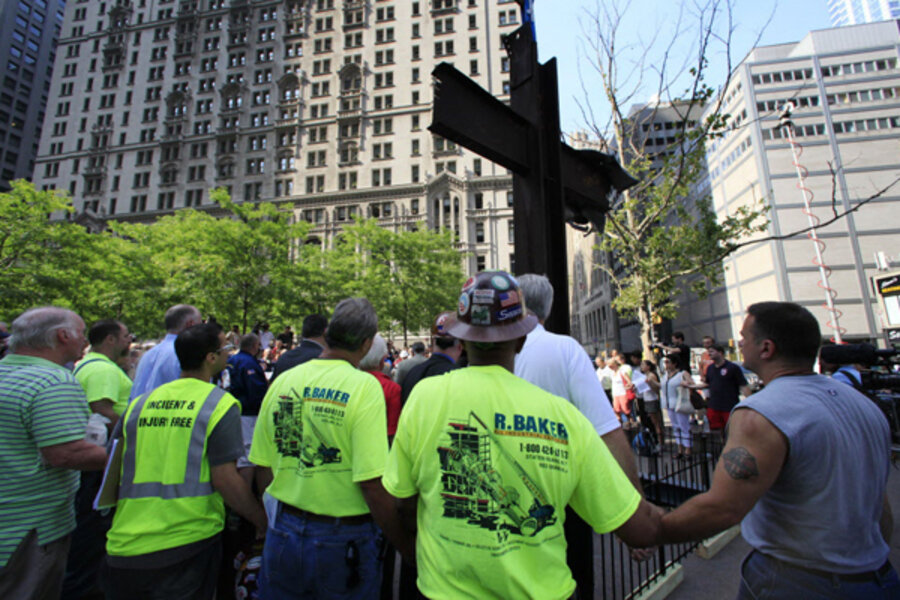Sept. 11 museum says steel cross, 'historical object,' should stay
Loading...
| New York
A judge should toss out a lawsuit by a national atheists group seeking to stop the display of a cross-shaped steel beam found among the wreckage of the World Trade Center, lawyers for the operators of the Sept. 11 memorial at ground zero say.
The lawyers said in papers filed in U.S. District Court in Manhattan on Monday that the 17-foot (5.18-meter)-tall beam will be displayed as a historical object because it tells part of the story of the rescue and recovery effort after the Sept. 11, 2001, terrorist attacks, which destroyed the twin towers and killed thousands of people.
They said the display of the cross among 1,000 artifacts, photos, oral histories and videos is no different from the showing of hundreds of religious paintings routinely displayed at government-supported art museums.
The nonprofit group American Atheists sued the National September 11 Memorial & Museum's operators last year, saying the beam's display would be unconstitutional. A message left with a lawyer for the group was not immediately returned Wednesday.
Lawyers for the memorial operators said in their papers that the steel beam, found by rescue workers two days after the terror attacks, was an inspiration. They said workers "took solace in its symbolism as they searched for survivors and found mostly victims."
The lawyers noted that the museum is an independent non-profit corporation and decisions by its curators about what to display are not state actions subject to constitutional protection.
"But even if the independent decisions of a non-governmental body could constitute state action, there is no legal authority for the proposition that a museum is prohibited from displaying an item with historical, cultural or artistic significance merely because that item also has religious significance," the lawyers said.
They accused the atheists group of seeking "to revise history to eliminate religion from its retelling, ignoring the fact that the people most closely tied to the September 11 tragedy responded in varied ways, including, in some cases, turning to their respective faiths."
The museum, which is mostly underground, was scheduled to open this year, but delays have left its opening date uncertain.







